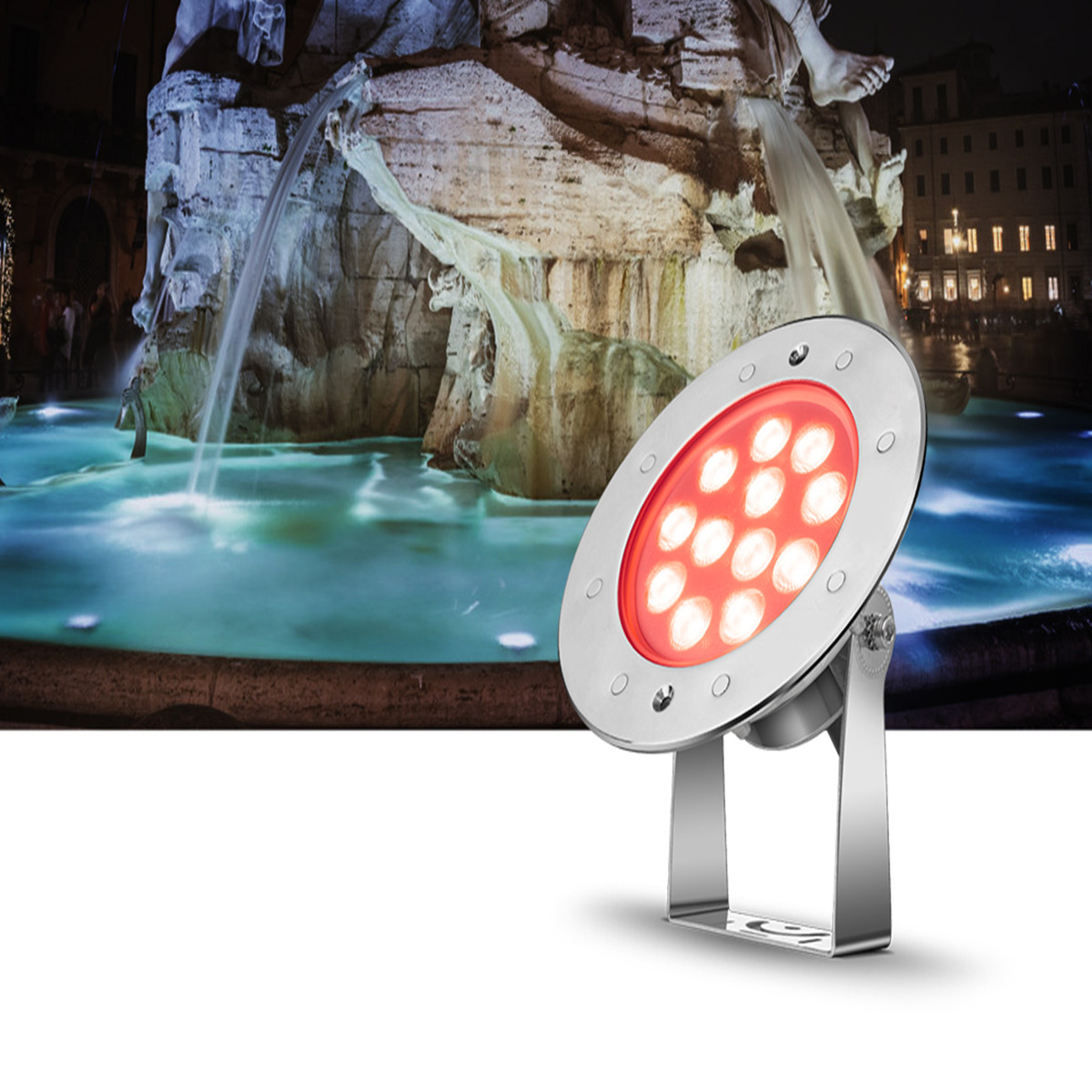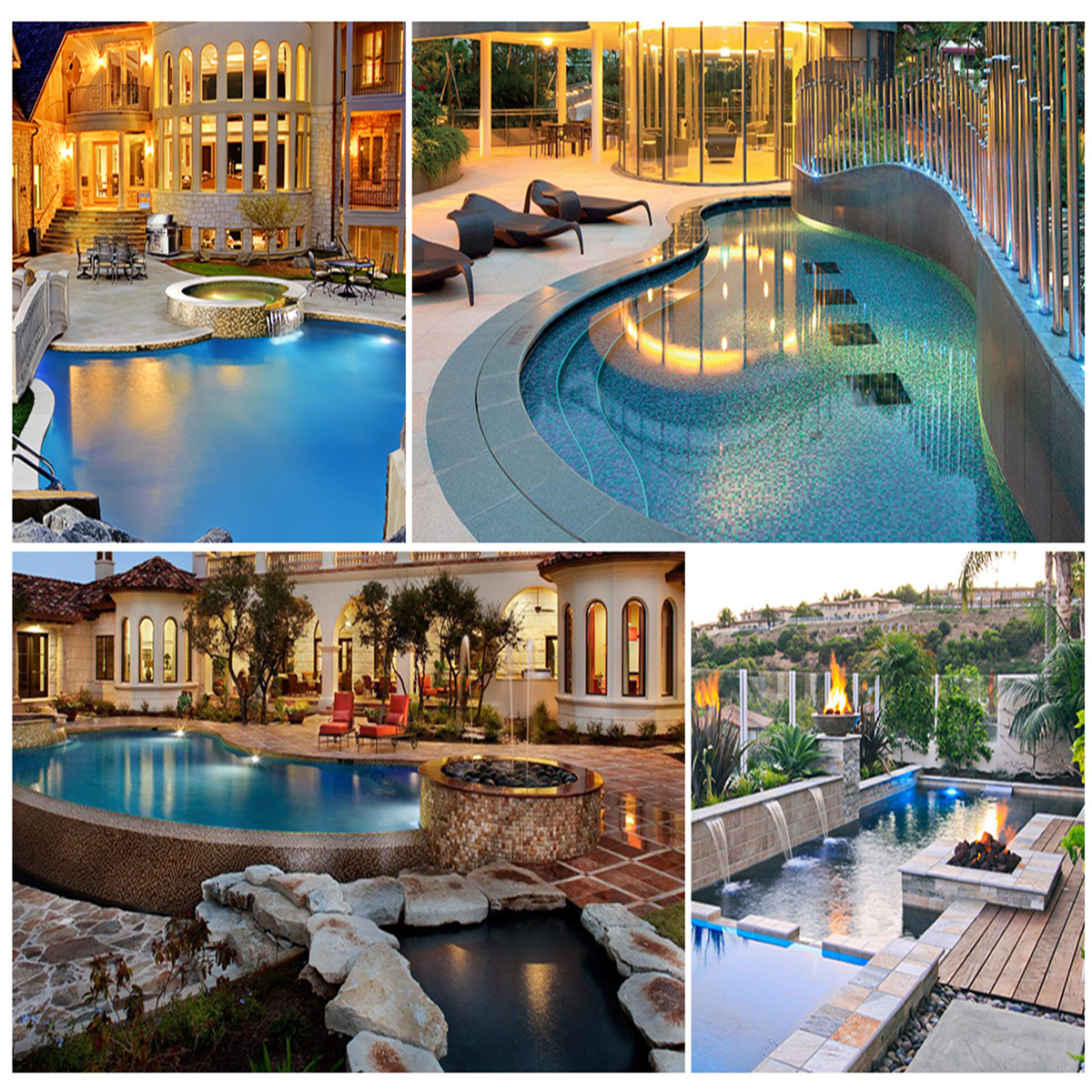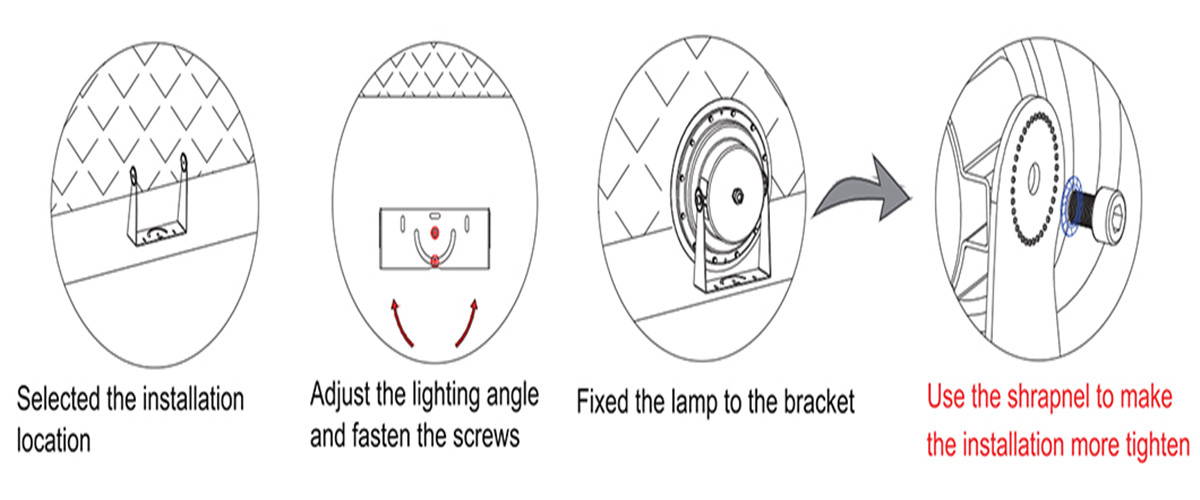What is an underwater light?
Underwater lights refer to lamps installed underwater for lighting, usually used in swimming pools, aquariums, boats and other underwater environments. Underwater lights can provide light and beautification, making the underwater environment brighter and more attractive. These lamps usually have a waterproof design and corrosion resistance to ensure safe and stable operation in underwater environments.
Where are underwater lights generally used?
Underwater lights are generally used in outdoor ponds, pools or swimming pools for lighting and decoration. These fixtures provide beautiful underwater lighting and added safety at night. Common application scenarios include pools in villa gardens, water features in hotels and resorts, etc.
What is the difference between underwater lights and ordinary lights?
The difference between underwater lights and ordinary lights is that underwater lights are specially designed for use underwater and are usually waterproof and corrosion-resistant to ensure safe use and long-term durability in underwater environments. Ordinary lights are designed to be used indoors or outdoors in dry environments, and usually do not have the characteristics of underwater use. Underwater lights usually use waterproof light sources such as LEDs and can withstand water pressure. They are suitable for lighting and decoration in water bodies such as ponds, pools or swimming pools.
What is the function of underwater lights?
Underwater lights are often used for underwater lighting and decoration. They provide beautiful light effects and are used to illuminate swimming pools, ponds, fountains and other bodies of water, adding charm and safety to nighttime environments. Underwater lights can also be used on boats or during diving activities to provide lighting and visibility.
What are the advantages of underwater lights?
Advantages of underwater lights include:
Aesthetics: Underwater lights can add light and shadow effects to the underwater environment and enhance the beauty of the landscape.
Safety: At night or in dim environments, underwater lights can provide lighting, increase visibility around water bodies, and improve safety.
Durability: Quality underwater lights are usually waterproof and corrosion-resistant, allowing them to be used underwater for extended periods of time.
Energy saving and environmental protection: Some underwater lights use LED technology, which is energy-saving and has a long life, helping to save energy and reduce environmental impact.
How to install underwater lights?
To install an underwater light, you’ll need to follow the manufacturer’s instructions carefully, as the exact process may vary depending on the type and model of light. However, the general steps for installing underwater lights are as follows:
Choose the right location:
Choose the area of your pool where you want to install your underwater lights. Make sure it’s at the right depth and away from any pool equipment or obstructions.
Turn off the power:
Before beginning installation, turn off the power to the pool lighting circuit at the main breaker panel.
Prepare the light fixture:
If the underwater light is designed to be mounted on the pool wall, follow the instructions to assemble the light fixture and make sure all components are in place. Also, check the condition of gaskets and seals to make sure they are intact and in good condition.
Make the necessary holes:
Use a suitable drill or cutting tool to make the necessary holes in the pool wall or base to accommodate the light fixture.
Install the light fixture:
Carefully insert the light fixture into the hole according to the manufacturer’s instructions. Make sure fixtures are in place according to the manufacturer’s instructions.
Connect the Wiring: Follow electrical guidelines and local building codes to lay out and connect the wiring from the lights to the power source. Test the lights: Once installation is complete, turn on the power and test the lights to make sure they are working properly.
Sealing and Finishing:
Use appropriate sealing materials to ensure the fixture is waterproof and secure. Follow the manufacturer’s recommendations for sealing and completing the installation. Get professional help if needed: If you are unsure about any aspect of the installation process, it is recommended to seek the help of a qualified electrician or pool professional to ensure the lights are installed safely and correctly. When working with electricity and water, always prioritize safety and follow all relevant safety guidelines. If you have no electrical work experience, it’s best to consult a professional to ensure a safe, successful installation.
What should I pay attention to when installing underwater lights?
The following precautions need to be followed when installing underwater lighting fixtures:
Waterproof performance: Choose underwater lamps with good waterproof performance to ensure that they can be used safely and reliably in underwater environments.
Safe power supply: Use professional waterproof power supply equipment and circuits to ensure that the power supply of the lamp is stable and safe.
Firm fixation: Ensure that the installation position is stable and can firmly fix the underwater lamp to prevent it from moving or falling off due to water flow or other external forces.
Waterproof connectors: Waterproof connectors should be used at all wire connections, and the connectors should be well-sealed with waterproof tape or glue.
Environmental adaptation: Ensure that the selected underwater lamp materials can be used in the underwater environment for a long time and have corrosion resistance and weather resistance.
Generally speaking, when installing underwater lighting fixtures, you need to strictly follow the requirements for waterproofing, electrical safety, and structural stability to ensure safe and reliable use of underwater lighting fixtures.
How to deal with problems when using underwater lights?
If problems arise while using underwater lights, here are some suggestions:
Check the power supply: First check whether the power supply of the underwater light is normal, make sure that the connection line is not damaged or short-circuited, and that the power supply is stable.
Check the condition of the light fixture: Check the condition of the underwater light fixture itself, including whether the bulb is damaged, whether the light fixture shows signs of corrosion or damage, and whether the sealing performance of the light fixture is intact.
Cleaning and maintenance: Clean underwater lamps regularly, remove algae, dirt, or other debris attached to the surface, check whether the waterproof ring of the lamp is intact, and replace the waterproof ring if necessary.
Check the installation: Check the installation position and fixation method of the underwater light to ensure that it is not loose or displaced. Also, check whether the wire connection is good and not damp or damaged.
Professional Repair: If the problem cannot be solved on your own, it is recommended to seek professional underwater light repair services to ensure that the problem is effectively solved and safe to use.
If the above methods cannot solve the problem, it is recommended to contact the relevant supplier or manufacturer for consultation and repair.
Post time: Dec-15-2023



